Understanding Dryer Vent Length: Key Considerations
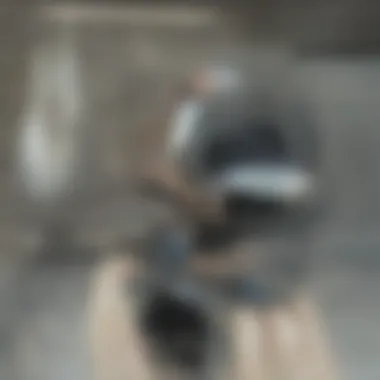

Intro
Dryer vent length significantly influences the performance and safety of a dryer. Understanding the implications of vent length can help homeowners make informed decisions that protect their homes and enhance dryer efficiency. This article aims to provide a detailed exploration of dryer vent systems, key considerations, and best practices for ensuring optimal functionality.
Key points discussed will include:
- Recommended lengths for various dryer types
- Factors that affect vent systems
- Guidelines for installation and maintenance
Following this overview, we'll delve into specifics that can help everyone from homeowners to contractors navigate the complexities of dryer vent configuration.
Prolusion to Dryer Vents
Dryer vents play a critical role in the operation of household dryers. Understanding their function and importance is essential for maintaining safety and efficiency in residential settings. The topic of dryer vents is not merely technical—it encompasses elements that can significantly impact functionality, energy consumption, and even fire safety.
When a dryer operates, it generates moisture that needs to be vented outside. Proper ventilation ensures that this moisture does not accumulate inside the home, which can lead to mold problems and structural issues. Hence, knowing how dryer vents work can directly influence your home’s environment.
Moreover, a well-vented dryer operates more efficiently, reducing drying time and energy bills. Taking these factors into account, one can appreciate the importance of discussing dryer vents in this article.
What Are Dryer Vents?
A dryer vent, in simple terms, is a duct that expels hot air and moisture from your dryer to the outside of your home. This ducting is crucial for the dryer's operation as it carries away the byproducts generated during the drying process. Most commonly, dryer vents are made from materials such as aluminum, plastic, or metal.
The primary function of a dryer vent is to channel airflow from the dryer to the exterior. This ensures wet air escapes, preventing moisture build-up that could lead to various problems, including poor drying performance and mold growth. Inappropriate venting can compromise the efficiency of the appliance and pose potential safety risks.
Importance of Proper Venting
The importance of proper venting cannot be overstated. Insufficient or blocked dryer vents can lead to heat buildup, increasing the risk of fire hazards. According to the National Fire Protection Association, failure to clean dryer vents is among the leading causes of dryer-related fires. Thus, regular maintenance and adherence to proper venting practices are necessary.
Additionally, efficient venting contributes to the longevity of your dryer. If the air cannot exhaust properly, the dryer's components can wear out prematurely. This leads to higher repair or replacement costs.
In summary, understanding dryer vents and ensuring proper venting are essential for enhancing the safety and efficiency of laundry operations in any home.
Understanding Dryer Vent Length
Understanding dryer vent length is crucial because it directly affects dryer performance, safety, and energy efficiency. Proper vent length ensures that the dryer can effectively expel moist air, which is essential for optimal drying cycles. If the vent is too long or too short, it may lead to inefficient operation, increased energy consumption, and even safety hazards. Knowing how to assess the correct vent length can save homeowners from potential issues such as excessive heat buildup and dryer malfunctions.
Definition of Dryer Vent Length
Dryer vent length refers to the total distance the exhaust air must travel from the dryer to the outside of the home. This length includes any turns or bends in the venting path. A shorter vent length is generally preferred, as it allows for better airflow and reduces the risk of lint accumulation. Understanding how vent length is measured can help ensure compliance with manufacturer's guidelines and local building codes.
Standard Recommendations
Standard recommendations play an essential role in determining the appropriate dryer vent length. These guidelines are developed based on extensive research, ensuring dryers operate safely and effectively.
Manufacturers' Guidelines
Manufacturers' guidelines provide specific recommendations regarding dryer vent length, taking into account the design and mechanics of the dryer. Each brand often specifies a maximum vent length, which is typically around 25 feet for most residential dryers. This limitation helps to promote efficient airflow, reducing the chance of overheating and increasing drying efficiency. Choosing to follow these guidelines can prevent costly repairs and enhance the performance of the dryer.
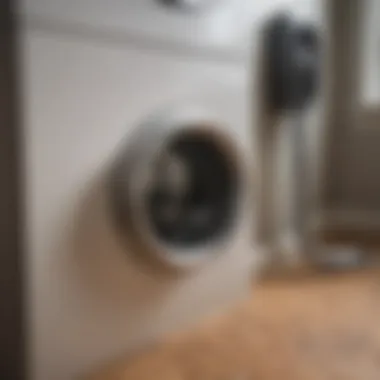
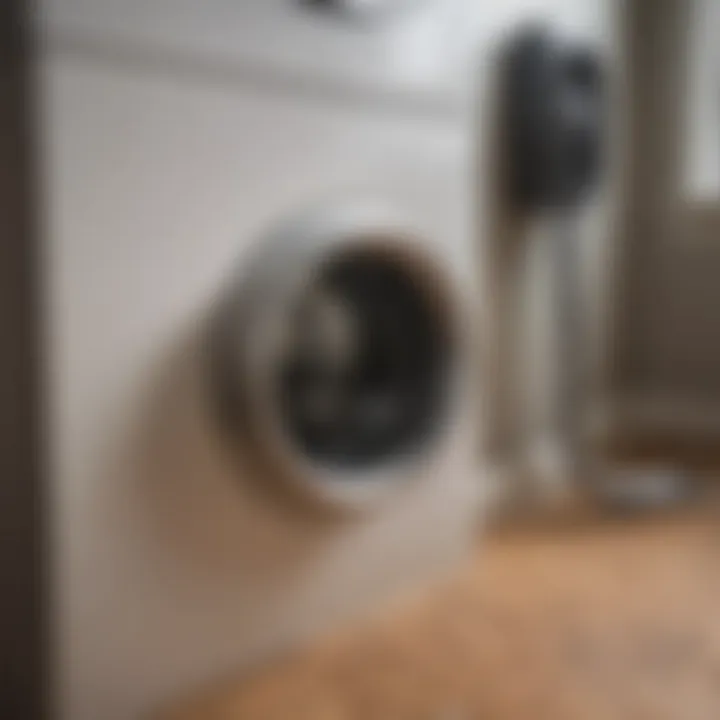
Local Building Codes
Local building codes are established to maintain safety and compliance in residential installations. These codes often dictate the maximum allowable lengths for dryer vents, alongside required materials and installation practices. Adhering to local codes can be advantageous as it ensures the installation meets safety and regulatory standards. This reduces liability for homeseller or contractors and enhances resale value, as properly installed vents are viewed as a positive attribute in the housing market.
"Adhering to local building codes not only aids in safety but also influences property value positively."
Factors Influencing Dryer Vent Length
In the realm of dryer vent systems, length is not just a trivial measurement but a pivotal element that can significantly impact the performance and safety of a dryer. Understanding the factors that influence dryer vent length can help in making informed decisions about installation and maintenance. Several critical elements determine how long a dryer vent should be, including the type of dryer and the installation environment. Focusing on these factors ensures that the dryer operates efficiently and safely, minimizing potential hazards.
Type of Dryer
The type of dryer used is one major consideration impacting the length of the dryer vent. Different dryers require certain accommodations in terms of vent length and arrangement.
Front-Loading vs. Top-Loading
Front-loading dryers tend to be more efficient with respect to water extraction. These machines often have a design that allows for a shorter vent length since they produce lower moisture levels compared to top-loading dryers. A key characteristic of front-loading dryers is their ability to spin clothes faster, leading to decreased drying time. This efficiency makes them a popular choice among homeowners seeking to save energy and time.
On the other hand, top-loading dryers can sometimes demand longer vent lengths, particularly if they are not as efficient in water extraction. The unique feature here is the design which can accumulate more moisture in the drum. Thus, if a vent system must be longer, it must be designed correctly to maintain airflow and minimize clogs.
Gas vs. Electric Dryers
Gas dryers and electric dryers exhibit differences concerning venting needs as well. A primary distinction is that gas dryers often dry clothes faster than electric ones, which can necessitate shorter vent systems. However, the combustion process in gas dryers means that ventilation is crucial for safety, often leading professionals to recommend certain lengths to ensure proper air exchange.
Electric dryers, in contrast, tend to have longer venting systems due to the heat element they utilize. While electric dryers are generally easier to install, mitigating the distance is key to preventing a decrease in efficiency.
Installation Environment
The installation environment significantly affects the dryer vent length. Where a dryer is situated can determine how the vent is routed and the optimal length for performance and safety.
Single-Family Homes
In single-family homes, the layout often allows for direct venting to the exterior with minimal turns. This simplicity can improve dryer performance by limiting resistance to airflow. A typical characteristic of single-family homes is having a dedicated laundry area, which enhances the convenience of optimal vent routing. However, care must be taken to adhere to local building codes that may stipulate vent length and materials.
Multi-Story Buildings
In contrast, multi-story buildings present unique challenges. As dryer vents are often routed vertically, longer distances can become necessary, potentially complicating airflow. The key characteristic of multi-story buildings is that they can lead to excessive buildup of lint if not carefully managed. These longer systems may necessitate more frequent inspections and cleaning, making maintenance essential to avert efficiency problems and safety hazards.
Consideration: Always remember that the installation environment and type of dryer influence not only the vent length but also the overall operational cost and safety of the dryer.
Consequences of Incorrect Vent Length
Understanding the consequences of incorrect vent length is crucial for maintaining dryer performance and ensuring safety in your home. An improperly installed or poorly maintained dryer vent can lead to significant issues that affect not only the efficiency of the dryer but also the safety of the entire household. Ignoring these factors can result in wasted energy, increased risk of fire, and health problems due to excess moisture.
Dryer Efficiency Issues
When a dryer vent is too long or has unnecessary bends, the airflow is restricted. This restriction causes the dryer to work harder to expel hot, moist air. Consequently, drying times increase, leading to higher energy consumption and wasted utility costs. Homeowners may find themselves running the dryer multiple cycles to achieve clean, dry clothes.
Inadequate airflow also contributes to lint buildup, which can clog the vent. Excessive lint is a fire hazard and further decreases dryer efficiency, potentially damaging the appliance over time.


Regularly check your dryer vent length to maintain optimal performance.
Fire Hazard Risks
One of the most severe consequences of an incorrect dryer vent length is the increased risk of fire. Lint, a primary fuel source for dryer fires, can accumulate in longer or improperly routed vents. The heat generated by the dryer can ignite this lint, leading to a fire that could quickly spread through the home.
Federal agencies, including the U.S. Consumer Product Safety Commission, report thousands of dryer-related fires annually. Ensuring that the dryer vent meets manufacturers' guidelines for length is essential to minimize fire risks. Proper vent lengths help to guarantee that lint does not collect in the vent channel, keeping it clear and safer for use.
Humidity and Mold Problems
Another significant consequence of incorrect vent length is the potential for increased humidity inside the home. A long dryer vent can trap moisture, preventing effective venting of humid air. This moisture can condense within the vent or in the surrounding areas, creating an environment conducive to mold and mildew growth.
Mold not only poses serious health risks but can also lead to costly home repairs. Homeowners may face structural damage as mold infiltrates walls, ceilings, and insulation. Thus, maintaining the appropriate dryer vent length is vital not only for dryer efficiency but also for the overall health of the living space.
In summary, the consequences of incorrect vent length are severe and multifaceted. Focusing on these aspects is essential for ensuring a safe and efficient dryer operation.
Best Practices for Maintaining Optimal Dryer Vent Length
Maintaining optimal dryer vent length is crucial for ensuring the efficiency and safety of a dryer. When the vent is too long or improperly installed, it can lead to several issues, including reduced performance and increased fire hazards. Following best practices for vent length will help maximize dryer efficiency and mitigate risks, making it an important topic for homeowners and contractors alike.
Regular Inspections
Regular inspections are key to maintaining the integrity of dryer vents. It is recommended to conduct inspections at least once a year. This frequency allows homeowners to identify problems early before they escalate. During inspection, check for any signs of lint build-up, which can impede airflow. Lint accumulation often leads to longer drying times and increased energy consumption. Regular checks can also reveal any damages that could compromise vent function.
How Often to Inspect?
Inspecting your dryer vent once a year is considered a beneficial practice. This schedule allows for the identification of potential problems, like blockages from lint. Frequent checks help ensure that the dryer operates efficiently, as accumulated debris can significantly affect performance.
One unique feature of regular inspections is the ability to preempt costly repairs. Catching issues early prevents requiring more complex fixes or even replacing the entire vent system. However, there might be disadvantages in terms of time and effort required – not everyone makes regular inspections a priority.
Signs of Blockages
Identifying blockages is fundamental to maintaining a safe and effective dryer vent. Common signs of blockages include longer drying times and excessive heat from the dryer surface. If clothes come out still damp or the dryer emits unusual sounds, these could indicate airflow issues.
Blockages can reduce the efficiency of the vent, making it a critical aspect to monitor. Recognizing these signs is crucial because ignoring them may lead to significant risks, such as fire hazards. The significant feature of identifying blockages is its impact on safety and efficiency. The disadvantage, however, is some signs may be subtle and easily overlooked, leading to delayed responses.
Cleaning Recommendations
Keeping the dryer vent clean is another vital aspect of maintaining optimal length. Regular cleaning helps prevent lint build-up, ensuring that the vent operates effectively. Homeowners can choose from various methods for cleaning, depending on their comfort with DIY techniques or preference for professional services.
DIY Cleaning Techniques
DIY cleaning techniques are practical for homeowners who prefer an active role in maintenance. Using a vacuum with a long attachment, individuals can reach areas that accumulate lint. Routine cleaning every three to six months is a good practice, depending on dryer usage.
A key characteristic of DIY techniques is cost-effectiveness. Homeowners save on service fees by doing the work themselves. However, there are disadvantages, such as the potential for incomplete cleaning if proper tools are not used. Not every homeowner has the patience or skill to execute a thorough cleaning effectively.
Professional Cleaning Services
Hiring professional cleaning services is beneficial for those who prefer to avoid the hassle of DIY cleaning. Professionals have the tools and experience to thoroughly clean the entire system efficiently. They can also detect issues that might go unnoticed in casual inspections.
The key advantage of using professional services is the level of thoroughness they provide. Experts often use advanced technology to ensure a comprehensive clean, which adds to safety. The disadvantage might be the cost associated with these services. For some homeowners, frequent professional cleaning may not be financially feasible.
When to Replace Dryer Vents
In some cases, no amount of maintenance can keep a dryer vent operating efficiently. Knowing when to replace the vent can save time and prevent hazards. Signs that indicate the need for replacement include visible damage such as cracks or corrosion, or very old material that fails to meet current standards. Regular assessment of the vent will guide homeowners in making informed decisions about when replacement becomes necessary.
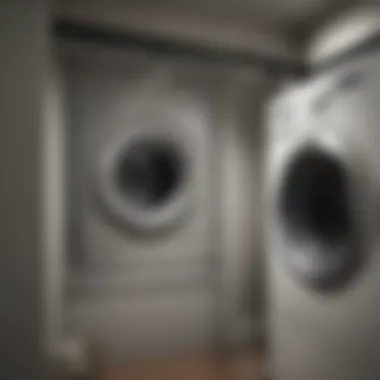
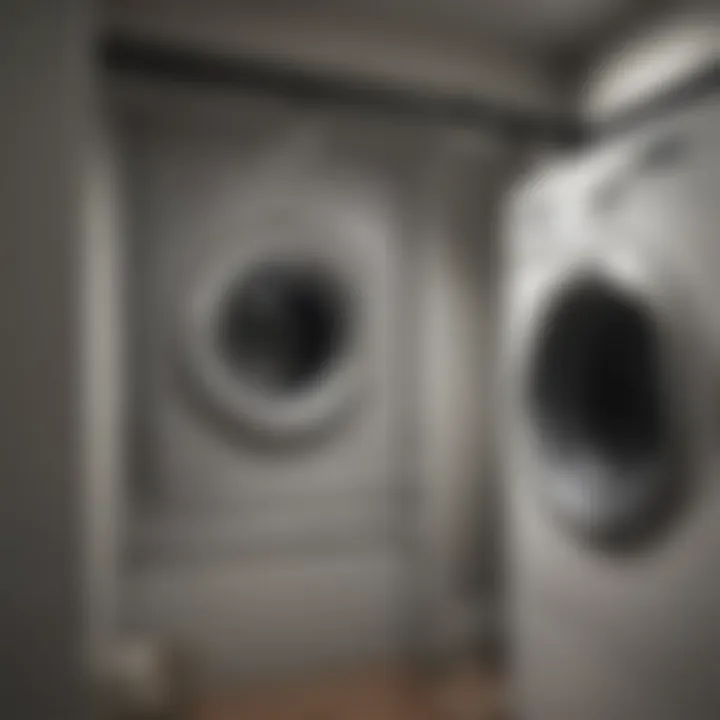
Installation Guidelines for Dryer Vents
Proper installation of dryer vents is vital for ensuring both efficiency and safety in laundry operations. The guidelines surrounding this aspect not only help in maximizing the dryer’s performance but also prevent hazards that can arise from improper venting. Following these installation guidelines facilitates a safe environment and extends the lifespan of the appliance.
Choosing the Right Materials
Selecting the right materials for dryer vents contributes significantly to the overall efficiency of the drying process. Different materials have unique properties that can impact airflow and durability.
Aluminum vs. Vinyl vs. Steel
When choosing between aluminum, vinyl, and steel, several factors must be considered. Aluminum is often preferred due to its lightweight nature and resistance to corrosion. It allows for good airflow, which is essential for drying efficiency. Vinyl, on the other hand, is less durable and can sag over time, leading to clogs. It is usually cheaper but lacks the longevity of aluminum. Steel provides excellent strength and resistance to dents but can be heavy and more difficult to install. Each material has its merits and drawbacks, making it crucial to assess the environment and usage before making a selection.
In summary, for a balance of performance and longevity, aluminum tends to be the more beneficial choice.
Importance of Smooth Interior Surfaces
The interior surface of dryer vents plays a critical role in minimizing lint buildup and maximizing airflow. Smooth surfaces prevent lint accumulation, reducing the risk of fire hazards and improving dryer efficiency. Unlike rough surfaces, which can trap lint and moisture, smooth interiors allow for better air passage and reduction in drying times.
This characteristic is particularly beneficial as it not only enhances safety but also saves energy. A smooth vent helps maintain optimal drying conditions, thus extending the life of the dryer.
Correct Vent Routing
Proper routing of dryer vents is another essential aspect of installation. It dictates how well the dryer expels moist air, affecting efficiency and safety.
Avoiding Turns and Bends
When installing dryer vents, avoiding unnecessary turns and bends is crucial. Each bend in a vent can lead to increased resistance to airflow, creating a situation where the dryer works harder than needed. Fewer turns mean more efficient airflow, which translates to energy savings and faster drying times.
Moreover, minimizing bends decreases the likelihood of lint accumulations that can pose fire risks.
Maintaining Slope for Drainage
Another important factor is maintaining an adequate slope for drainage. Properly sloped vents ensure that moisture and any debris can easily flow out of the vent. This prevents blockages and maintains the efficiency of the dryer.
A slope that is too steep may become problematic, leading to backpressure that can affect performance. It is essential to strike the right balance to ensure optimal drainage with each use.
The combination of choosing the right materials, ensuring smooth surfaces, and adhering to correct routing guidelines fosters a safer and more effective drying experience.
The End
The conclusion section of this article serves as a vital synthesis of the key points discussed regarding dryer vent length. Understanding these considerations not only enhances the operational efficiency of dryers but also underscores crucial safety aspects that protect homes from potential hazards.
Recap of Key Takeaways
- Importance of Proper Dryer Vent Length: An appropriate length is essential for maximizing dryer efficiency, reducing energy consumption, and minimizing drying times. Additionally, it helps in avoiding moisture and lint buildup, which can lead to dangerous situations like fires and mold growth.
- Recommended Guidelines: Following established guidelines from manufacturers and local building codes is critical. Standard recommendations typically suggest that dryer vents should not exceed a certain length to preserve airflow.
- Factors Affecting Vent Length: Various elements such as the type of dryer, installation environment, and routing choices greatly influence the effective length of the vent. An improper installation can negate performance advantages no matter the dryer’s quality.
By keeping these points in mind, homeowners can make informed decisions regarding their dryer vent systems.
Final Recommendations
To ensure safety and efficiency, consider the following recommendations:
- Regular Inspections: Conduct routine inspections of your dryer vent to identify any blockages or buildup. This can help maintain optimal airflow, reducing the risk of fires.
- Professional Assistance: Depending on usage and installation complexity, enlist the help of professionals to clean and maintain dryer vents regularly.
- Material Choices: Select high-quality materials for installation. Aluminum and steel are preferable over vinyl for their durability and smoothness, minimizing lint accumulation.
- Installation Practices: Follow best practices for routing to minimize bends and turns. Each turn in the vent can restrict airflow, reducing effectiveness. Keep the vent system as straight and short as possible.
Engaging in these practices will lead to a better understanding of dryer vent systems and promote safer, more efficient use.







